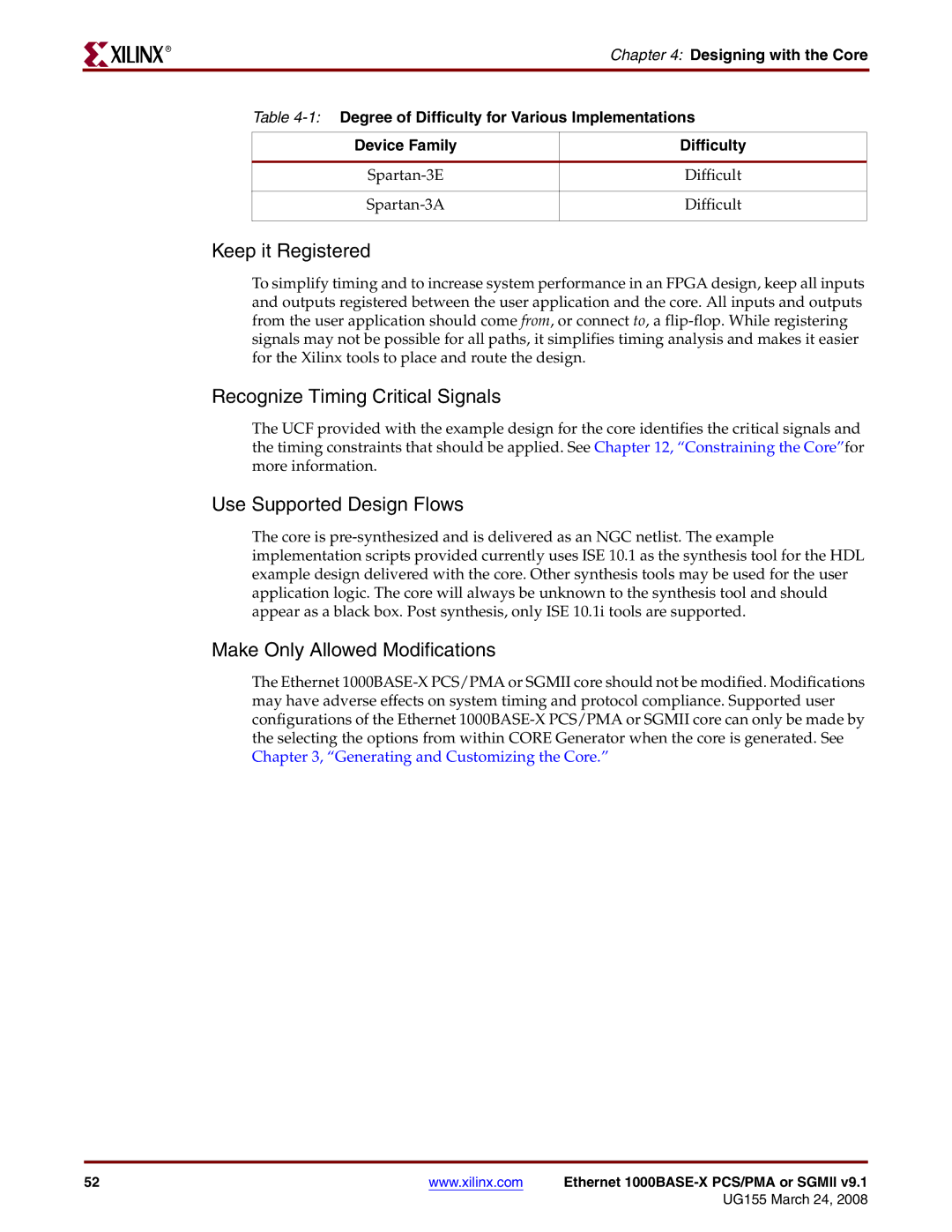
R
Chapter 4: Designing with the Core
Table
Device Family | Difficulty |
|
|
Difficult | |
|
|
Difficult | |
|
|
Keep it Registered
To simplify timing and to increase system performance in an FPGA design, keep all inputs and outputs registered between the user application and the core. All inputs and outputs from the user application should come from, or connect to, a
Recognize Timing Critical Signals
The UCF provided with the example design for the core identifies the critical signals and the timing constraints that should be applied. See Chapter 12, “Constraining the Core”for more information.
Use Supported Design Flows
The core is
Make Only Allowed Modifications
The Ethernet
52 | www.xilinx.com | Ethernet |
|
| UG155 March 24, 2008 |
